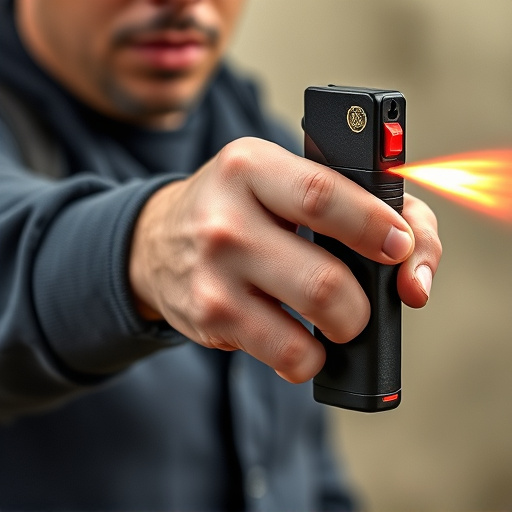Proper deployment of pepper spray for self-defense hinges on the Pepper Spray Holster Placement Guide, which offers strategic tips for easy access during emergencies. Optimal placement factors include dominant hand, clothing style, and movement range, with popular choices like waist or hip holsters. This guide ensures swift draw, enhancing personal safety by making retrieval instinctive. Comprehensive training is crucial, covering aiming techniques, distance, de-escalation strategies, local laws, and responsible use practices to maximize effectiveness while minimizing harm.
“Uncover the power of non-lethal self-defense with our comprehensive guide to pepper spray. ‘Pepper Spray Holster Placement Guide’ explores the essential components of this effective tool, from understanding its composition and ensuring quick access through optimal holster placement to training and safety measures.
Mastering these aspects maximizes its potential, providing users with a reliable means of protection without risk. Dive into our article to transform your self-defense strategy.”
- Understanding Pepper Spray: Its Composition and Effectiveness
- The Role of Holster Placement: Ensuring Quick and Safe Access
- Training and Safety Measures: Maximizing the Tool's Potential Without Risk
Understanding Pepper Spray: Its Composition and Effectiveness
Pepper spray is a non-lethal inflammatory self-defense tool that has gained popularity for its effectiveness in neutralizing potential threats. Comprising capsaicin, a compound derived from chili peppers, this chemical agent irritates the eyes and respiratory system, temporarily disorienting the attacker. When deployed, pepper spray creates a fog or gel that sticks to an assailant’s skin and clothing, causing intense irritation and pain. This non-lethal force option is widely used by law enforcement and civilians alike due to its swift action in defusing dangerous situations without causing permanent harm.
Proper usage hinges on understanding the pepper spray holster placement guide. Carrying it strategically ensures easy access during emergencies. Common places for holsters include belt pouches, ankle straps, or even keychains. The key is to have it within immediate reach, allowing users to deploy the spray quickly when facing a threat. With the right placement, pepper spray can serve as a powerful and effective self-defense mechanism, providing individuals with peace of mind in potentially hazardous environments.
The Role of Holster Placement: Ensuring Quick and Safe Access
The placement of your pepper spray holster is a critical aspect of self-defense. It’s not just about having the device; it’s about having easy and safe access to it in a high-stress situation. A well-chosen holster, strategically placed, can make all the difference between being prepared and being caught off guard. This is where our Pepper Spray Holster Placement Guide comes into play, offering essential insights for individuals looking to enhance their personal safety.
Consider factors like your dominant hand, clothing style, and movement range when deciding on a holster location. For instance, many opt for a waist or hip holster for quick draw accessibility during physical altercations. This placement allows for close proximity to the target area while keeping the device within easy reach, ensuring you can respond swiftly and securely. Always remember, the goal is to make the process of retrieving your pepper spray as instinctive as possible, so it becomes a natural reaction when faced with danger.
Training and Safety Measures: Maximizing the Tool's Potential Without Risk
Training and safety measures are paramount when it comes to harnessing the power of non-lethal inflammatory self-defense tools, such as pepper spray. Proper usage requires understanding the range, effects, and limitations of the product. A Pepper Spray Holster Placement Guide can be a valuable resource for ensuring quick access during an emergency. Comprehensive training should cover proper aiming techniques, distance considerations, and de-escalation strategies to maximize its potential while minimizing risks.
Safety precautions extend beyond training. Users must familiarize themselves with local laws regarding pepper spray usage and carry requirements. Storing the device in a secure location, out of reach of children and unauthorized individuals, is essential. Regular maintenance and understanding how to properly dispose of the product are also critical components of responsible use. By prioritizing safety measures alongside training, individuals can effectively utilize non-lethal self-defense tools with confidence and reduce potential harm.
Pepper spray, as a non-lethal inflammatory self-defense tool, has proven its effectiveness in numerous situations. Proper holster placement plays a pivotal role in ensuring quick and safe access during emergencies. Combined with comprehensive training and safety measures, individuals can maximize the potential of their pepper spray while minimizing risks. This Pepper Spray Holster Placement Guide equips users with the knowledge to defend themselves confidently and responsibly.
